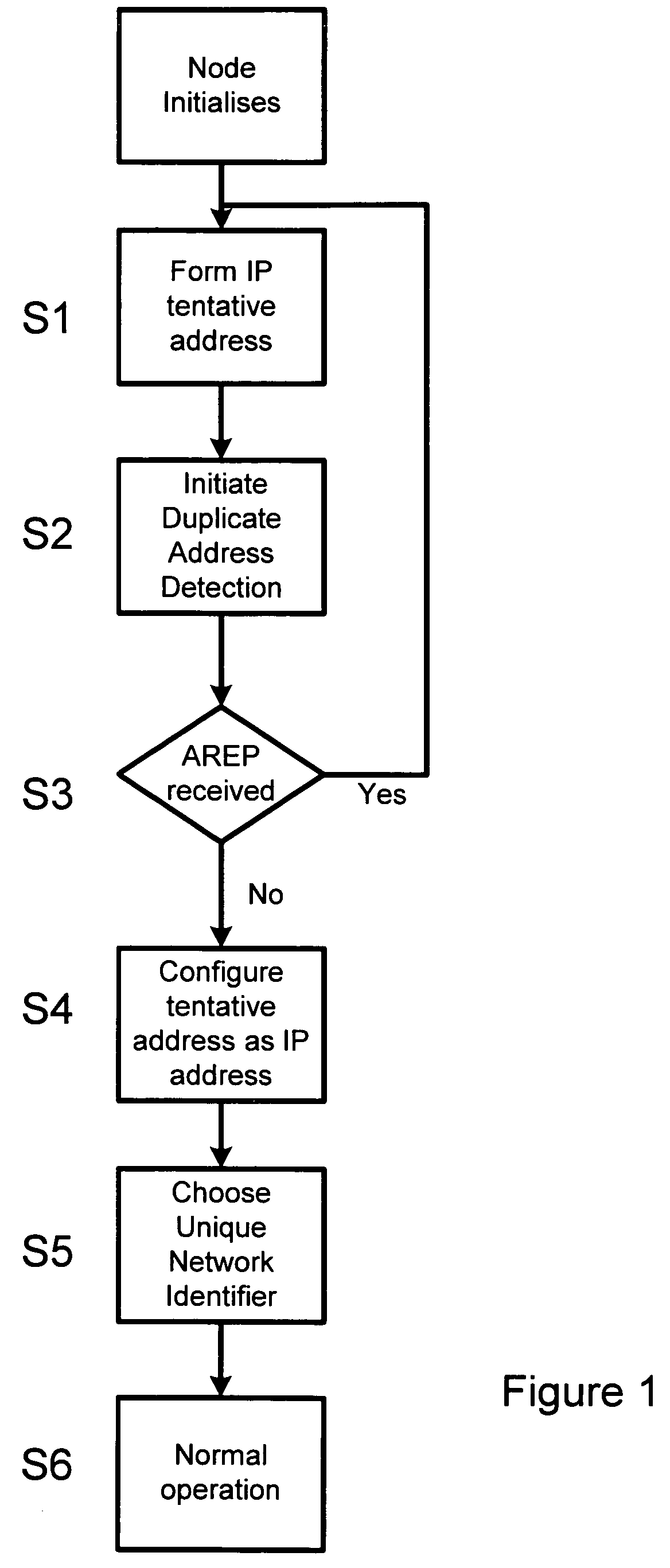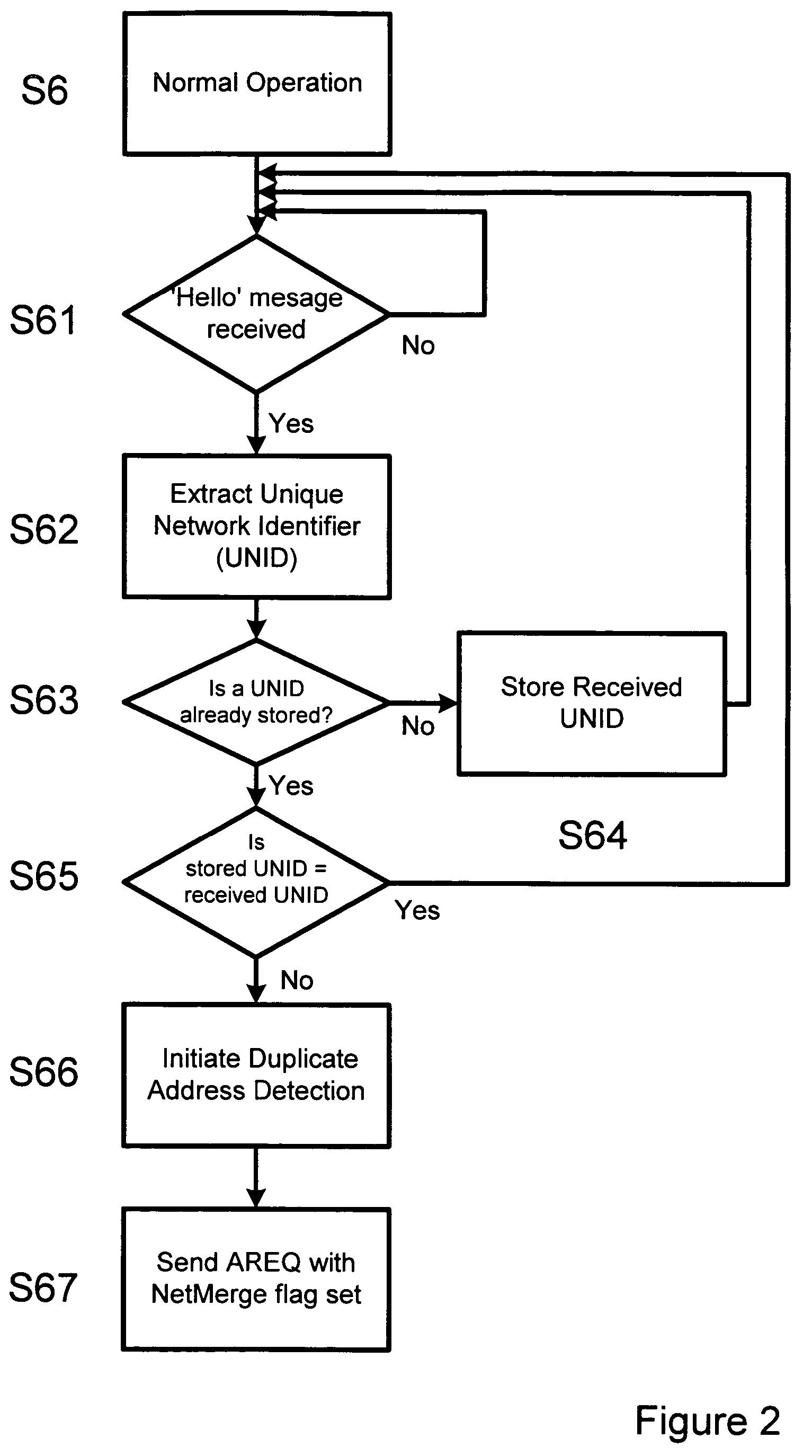Address autoconfiguration in ad hoc networks
- Summary
- Abstract
- Description
- Claims
- Application Information
AI Technical Summary
Benefits of technology
Problems solved by technology
Method used
Image
Examples
Embodiment Construction
[0028]The process of initialising a terminal to form a node is described with reference to FIG. 1. When a terminal is first initiated to join a network, it will find itself in one of two situations. Either there will be an existing network which it can join or there will be no existing network in which case it effectively forms its own new network. In either case, the terminal must determine an IPv6 address (S1) for use on the network.
[0029]Since an ad hoc network is a multi-hop environment, it should be considered as a site rather than a link. Consequently the IPv6 address for a new node is a site-local address. In this embodiment, the site-local address consists of four fields. These include a 10-bit site-local format prefix (FEC0:: / 10), a 38-bit field of all zeros, a 16-bit subnet ID and a 64-bit interface ID. The subnet ID is selected randomly from a determined range of values. In general, this range would allow any 16-bit value. In practice, some values are avoided, including t...
PUM
 Login to View More
Login to View More Abstract
Description
Claims
Application Information
 Login to View More
Login to View More - R&D
- Intellectual Property
- Life Sciences
- Materials
- Tech Scout
- Unparalleled Data Quality
- Higher Quality Content
- 60% Fewer Hallucinations
Browse by: Latest US Patents, China's latest patents, Technical Efficacy Thesaurus, Application Domain, Technology Topic, Popular Technical Reports.
© 2025 PatSnap. All rights reserved.Legal|Privacy policy|Modern Slavery Act Transparency Statement|Sitemap|About US| Contact US: help@patsnap.com



